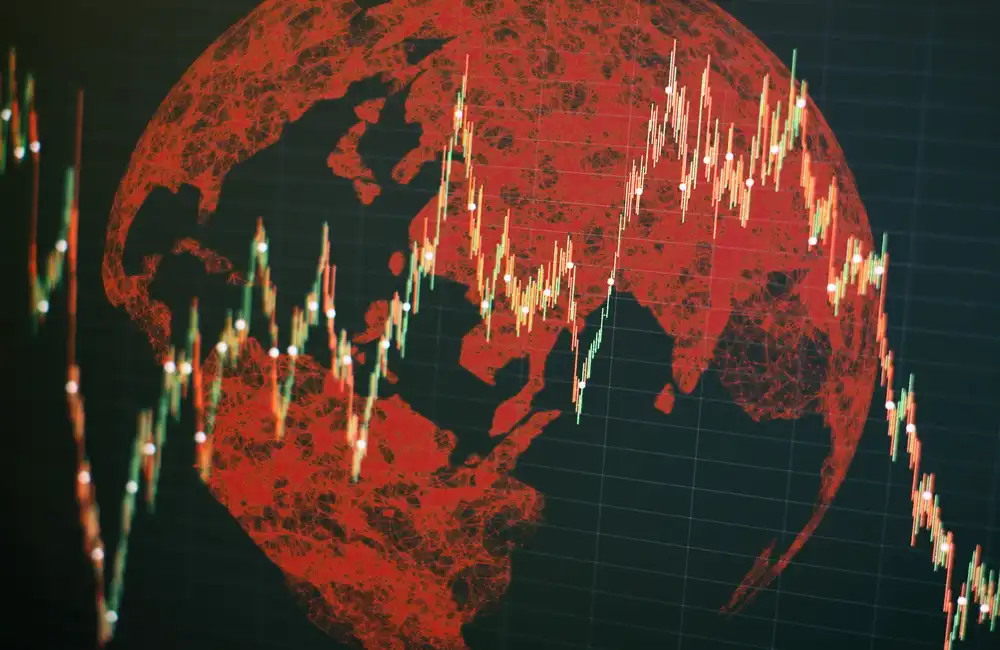The Chicago Board of Trade (CBOT) corn futures experienced a market capture leading to a nearly 5% surge over several days that concluded April 10, 2025.
Multiple factors, such as domestic supply restrictions and international trade developments, have reshaped the corn market, which explains this major rally.
Stakeholders, including farmers and investors, need to understand the primary driving forces of this rally to navigate the changing agricultural industry dynamics worldwide. The analysis identifies the primary factors driving the price increase through USDA corn supply revisions alongside EU trade delays and broader market effects.
USDA's Supply Adjustments
Lower Ending Stocks Create a Tighter Market
According to the USDA’s April World Agricultural Supply and Demand Estimates (WASDE) report, the market received a clear signal when projections for 2024/25 U.S. corn ending stocks fell to 1.465 billion bushels from last month’s 1.54 billion estimate. In their estimate, the USDA's reduction of 75 million bushels comes from exceeding expectations for export demand, which leads to tighter supply levels.
The current stocks-to-use ratio of 9.6% marks the lowest point in three years and creates market conditions that typically lead to high corn prices. During April 2022 and April 2023, when comparable ratio levels occurred, CBOT corn futures averaged $6.90 to $8.40 per bushel after inflation adjustment. The present average prices of $4.66 indicate undervaluation, which points to potential price increases.
Impact of Strong Export Demand
U.S. corn exporters exploited worldwide supply shortages to create business opportunities. USDA estimated exports for 2024/25 will reach 2.55 billion bushels after increasing by 100 million bushels, which positions this volume as the second-highest annual export quantity ever recorded. U.S. exporters have secured their international market position by achieving 85% of their export target by early April.
Worldwide supply constraints are increasingly evident as the global stocks-to-use ratio decreased to its lowest point in 11 years. The grain stock ratio reaches 29-year lows, apart from China, which maintains large reserves, highlighting the difficulties in meeting worldwide market needs.
Geopolitical Factors Influencing the Market
EU Decision to Delay U.S. Corn Tariffs
The market grew more complex after the European Union declared its decision to postpone the 25% U.S. corn import tariffs. The temporary halt of tariffs on U.S. corn imports beginning April 15, 2025, provides essential relief to American exporters and key market players like Spain's livestock feed industry. The European Union’s primary grain importer, Spain, encountered growing anxiety over its pending shipments of U.S. corn that remained in transit.
The decision prevents immediate disruptions, although high uncertainty persists. Ongoing trade disputes between major global economies create uncertainty about future export volume trends. As one of the biggest U.S. corn importers, Mexico could change its trade policies because of changing relations and increasing volatility in an unstable market.
Broader Trade Tensions and Market Volatility
Geopolitical conflicts, particularly those involving China and other leading trading partners, increase the risks confronting U.S. exporters. Creating long-term trade partnerships with South American producers represents a potential solution, but these strategies will not materialise soon enough to address the current situation.
Market Reactions and Investor Sentiment
Trading Strategies and Positions
Unsurprisingly, these developments are reshaping investor behaviour. Traders adjust their positions to benefit from anticipated corn price rises, as historical tight supply margins typically predict such trends. Investment funds have intensified their speculative activities by shifting portfolios to benefit from strong export demand and limited global supply availability.
Broader Commodities Impacts
The impact of market changes is spreading to other agricultural commodities. The relative weakness in soybean and wheat prices has partly counteracted the bullish sentiment in the corn market. Investor strategies show deep detail as they fine-tune their investments across related markets.
Implications for Stakeholders
For Farmers
The rise in corn prices presents potential gains for farmers but contains multiple limitations. Rising prices will likely increase input expenses for seeds and fertilisers, especially when global supply chain issues continue to exist. Farmers who utilise hedging strategies to secure beneficial prices in the current market conditions will achieve the greatest advantage.
For Exporters
U.S. exporters benefit from the temporary tariff delay, yet this relief does not represent a lasting resolution. Exporters must act agilely to find new markets and reinforce current trade partnerships to manage possible disruptions.
For Consumers
Increases in corn futures prices may cause subsequent price hikes for food products and animal feed. Producers who use corn as feed might incur higher expenses, likely translating into increased retail prices for meat and dairy products. Consumers must find ways to cope with growing expenses as worldwide supply availability becomes more restricted.
Conclusion
CBOT corn futures increased by nearly 5% during the week ending April 10, 2025, which shows the market struggles with decreasing domestic supplies and a fragile geopolitical situation. Price volatility developed due to the USDA reducing their ending stock forecasts and export demand and tariff-related trade delays.
Stakeholders must actively manage risks while identifying opportunities to capitalise on today's market environment. Farmers, exporters, and investors must remain vigilant about changing supply-demand trends while preparing for future industry modifications.
While uncertainty persists, one thing remains clear: The market position of corn futures has strengthened beyond recent levels, which requires stakeholders to adjust their strategies for future challenges.
















